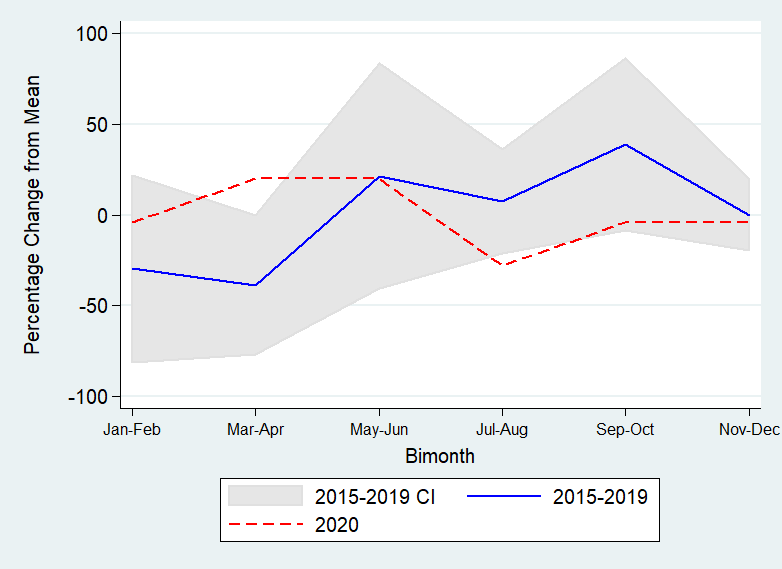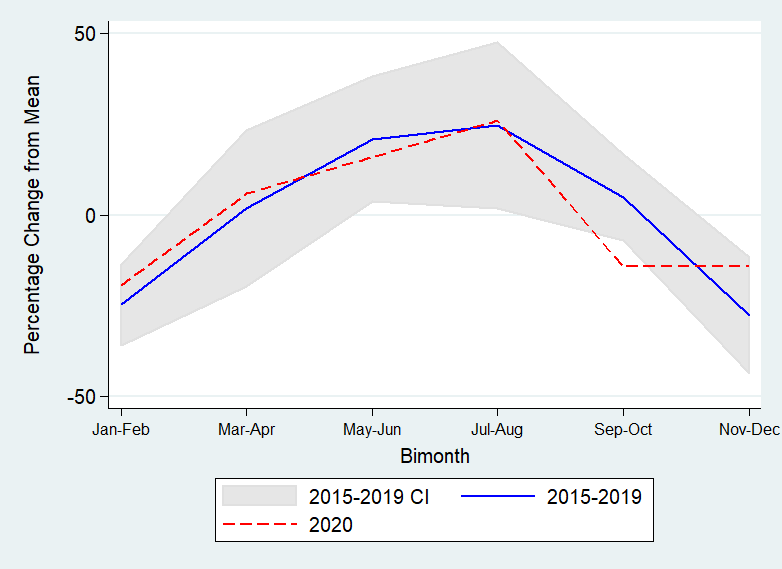Public Health & Prevention 1
Session: Public Health & Prevention 1
365 - Changes in Monthly Trends in Suicide Deaths During the COVID-19 Pandemic Among Adolescents Experiencing Homelessness in the US
Sunday, April 27, 2025
8:30am - 10:45am HST
Publication Number: 365.4135
Rie Sakai-Bizmark, The Lundquist Institute at Harbor-UCLA Medical Center, Torrance, CA, United States; Frank Wu, The Lundquist Institute for Biomedical Innovation, San Gabriel, CA, United States; Emily Marr, The Lundquist Institute, Torrance, CA, United States; Dennys Estevez, The Lundquist Institute, Alhambra, CA, United States; Benjamin Henwood, University of Southern California, Los Angeles, CA, United States; Hiraku Kumamaru, The University of Tokyo, Bunkyo-ku, Tokyo, Japan
- RS
Rie Sakai-Bizmark, MD, MPH, PhD (she/her/hers)
Associate Professor
The Lundquist Institute at Harbor-UCLA Medical Center
Torrance, California, United States
Presenting Author(s)
Background: In the U.S., suicide ranks as the third most common cause of death for youth aged 10 to 24. Research revealed monthly and day-of-the-week patterns in suicidal behavior among youth, decreasing in summer and over the weekends. Additionally, recent studies have reported a significant decrease in suicidal behavior in spring 2020, coinciding with the nationwide implementation of school closures as a pandemic control measure. These findings strongly suggest a significant association between school attendance and suicidal behavior among youth. However, the impacts of time away from school vary across subgroups. For example, youth experiencing homelessness (YEH) have higher rates of suicidal behavior during the summer and weekends. This increase may stem from a loss of social connection while away from school.
Objective: The objective of this study is to determine if the rate of suicidal behavior among YEH increased in spring 2020, coinciding with school closures.
Design/Methods: The National Violent Death Reporting System was used to obtain the number of suicide deaths among YEH and domiciled youth aged 11 to 22 years from 2015 to 2020. Due to the small number of suicide deaths per month, we analyzed monthly trends in two-month increments. In the absence of population estimates for YEH aged 11 to 22 years, we analyzed monthly trends as percent changes from the annual mean. A mean and 95% prediction interval for each month were estimated based on the percent change from the annual mean in 2015-2019. When the percent change from the annual mean in 2020 falls outside the 95% prediction interval using data from 2015 to 2019, it is defined as a significant change from the pre-pandemic period. To ensure the results are specific to YEH, we also analyzed suicide deaths among people experiencing homelessness (PEH) aged 40-49. This age group was chosen due to their lower likelihood of being enrolled in a school, making them less affected by school closures.
Results: We identified 212 suicide deaths among YEH and 33,724 among domiciled youth. As previously reported, we observed a significant decrease in suicide deaths during the spring of 2020 compared to the pre-pandemic period among domiciled youth, whereas suicide deaths among YEH increased during this time. No such increase was observed among PEH aged 40-49.
Conclusion(s): Unlike domiciled youth, the spring of 2020 was a period of heightened risk for YEH. The lack of a similar increase among PEH suggests that school closures disproportionately impacted YEH. In the event of future emergency school closures, targeted suicide prevention efforts for YEH will be needed.
Bimonthly trend in Percent Change from the Annual Mean Among Youth Experiencing Homelessness

Bimonthly trend in Percent Change from the Annual Mean Among Domiciled Youth

Bimonthly Trend in Percent Change from the Annual Mean Among People Experiencing Homelessness Aged 40–49

Bimonthly trend in Percent Change from the Annual Mean Among Youth Experiencing Homelessness

Bimonthly trend in Percent Change from the Annual Mean Among Domiciled Youth

Bimonthly Trend in Percent Change from the Annual Mean Among People Experiencing Homelessness Aged 40–49


